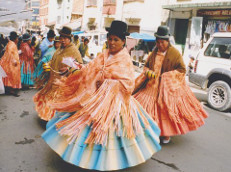I was thankful this week that “Lucha Libre: Stories with no Time Limit” by Orellana et al was so comprehensive, as primary forms of entertainment serve a multitude of functions within culture. The paper reiterates that increasingly where there is representation of Latin culture there is also an idealization of the heightened emotions that seizes the senses. Voices cheering, jeering, yelling from all sides of the arena give way to costumes, intricate backstories, and a fight that at some times feels like dancing. Something from the paper that struck my attention is that (correct me if I am wrong), the loser is unmasked by the winner of the fight. To me the mask eludes to superhuman strength and a mission larger than identity. The fan culture surrounding Lucha Libre is filled with idolization of both the wearer and creator of these masks. Packaging entertainment and creating specialized paraphernalia for both various market age groups as well as for international/local audiences contributed greatly to the modernization of Mexico.
Culture is whatever becomes relevant to the average person’s mind whether it be surrounding a current event or their sense of identity, because decisions are made with the specific cultural aspect in their conscious. In this case, to fight for entertainment with masks on is a introduced cultural concept as children grow up with Lucha Libre action figures, going to see fights on Sundays, and being surrounded with religious and violent imagery. Unlike most sports there seems to be a clear person to root for and root against. I assume that the roles of rudos and téchnicos. I wish that there was more elaboration on the origins of these fighter archetypes. In the same avenue that narcos have ruled the underbelly of a rising outsider class force, proponents in Lucha Libre have sought to utilize their indignance towards societal grievances to garner success, either monetary or among the world of masked fighting.
The Bolivian wrestlers in The Fighting Cholitas highlighted ways in which fighting has been turned on its head. The women fighters mention that some adversaries argue that fights must be fought in traditional wrestling garb. These women however consider their layered skirts, braided hair, and shawls their luchador masks. While I am content to see women participating in sport that uplifts their strength and autonomy, something feels strange about an arena paying to see women beat each other up. Do you think we have become desensitized to men committing acts of violence against each other? How could the glorification of violence be harmful to different populations in Latin America?


